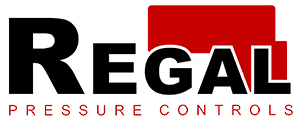In industries and applications that rely on liquid storage, maintaining accurate and reliable fluid levels is crucial for efficient operations and safety. Water level sensors for tanks are vital instruments that provide real-time data on the fluid levels within a tank, ensuring precise monitoring and management. In this article, we delve into the significance and functionality of water level sensors for tanks.
Table of Contents
ToggleUnderstanding Water Level Sensors
A water level sensor for tanks is an electronic device designed to measure and monitor the level of liquids within various types of containers, from small tanks to large reservoirs. These sensors employ different technologies and principles to provide accurate data on the liquid level, allowing operators to make informed decisions about fluid storage, usage, and replenishment.
Types of Water Level Sensors
There are several types of water level sensors available, each suited to different applications and tank configurations:
- Float Sensors: These sensors use a buoyant object, often a float, that rises and falls with the liquid level. As the float moves, it triggers a switch or sensor that provides the corresponding level information.
- Ultrasonic Sensors: Ultrasonic sensors emit sound waves that bounce off the liquid surface and return to the sensor. By measuring the time taken for the waves to return, the sensor calculates the distance to the liquid surface and deduces the fluid level.
- Pressure Sensors: Pressure sensors determine the fluid level by measuring the pressure exerted by the liquid column above the sensor. The higher the liquid level, the greater the pressure on the sensor.
- Capacitance Sensors: These sensors measure the change in capacitance between the sensor and the liquid, which varies with the fluid level. Capacitance sensors are especially useful for non-conductive liquids.
Importance of Accurate Monitoring
Accurate water level monitoring offers several benefits across various industries:
- Efficient Resource Management: Knowing the precise fluid level allows for optimized use of resources, preventing overfilling or depletion.
- Preventing Overflow: Monitoring prevents tanks from overflowing, avoiding wastage and potential environmental hazards.
- Process Consistency: Industries rely on consistent fluid levels to maintain manufacturing processes and product quality.
- Safety Measures: In critical applications, such as chemical storage, accurate monitoring prevents potentially dangerous overflows or leaks.
Integration with Automation and Control Systems
Modern water level sensors can integrate with automation and control systems, enabling remote monitoring and real-time alerts. These features are invaluable for operators who need to respond promptly to changes in fluid levels, ensuring continuous operations and preventing critical situations.
Application Diversity
Water level sensors find applications in diverse industries, including:
- Water Treatment: Monitoring water levels in reservoirs and tanks used for treatment processes.
- Agriculture: Managing irrigation systems and water storage for crops.
- Manufacturing: Monitoring coolant levels in industrial processes to prevent machinery damage.
- Oil and Gas: Monitoring fluid levels in storage tanks and pipelines.
Conclusion
Water level sensors for tanks play a pivotal role in various industries by providing accurate and reliable data on fluid levels. Their ability to prevent overflow, optimize resource usage, and ensure safety makes them indispensable components of modern industrial operations. With different types of sensors catering to various needs and applications, choosing the right water level sensor can enhance efficiency, safety, and productivity in liquid storage and management.
